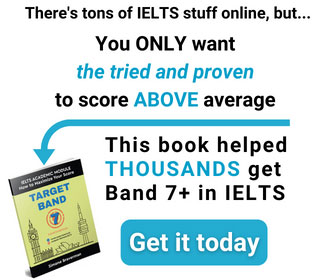The IELTS Writing Task 2 explained
I said this many times and I will repeat it again, “To write a good IELTS essay, you need to get into your examiner’s head”. You’ve got to understand what makes you gain or lose marks, because once you do – you can’t go wrong. What I am about to reveal here can be found in the IELTS official site, but I am explaining it in simple English.
This is how they grade your essay: you receive points for Task Response, Coherence and Cohesion, Lexical Resource, Grammatical Range and Accuracy. Looks heavy? Never mind, here comes the simple English version:
“Task Response” means that your essay shows that you considered and covered all the aspects of the topic. Let’s take this topic for example – “Internet: connecting or isolating people?”. Those who only chose to write about how Internet connects people – lose marks, those who only chose to write about how Internet isolates people – lose marks, those who compare and contrast both sides of the Internet and give arguments for and against – gain marks.
“Coherence and Cohesion” means how well you connected the paragraphs and sentences inside each paragraph. You see, all of your paragraphs need to be logically connected. For example, if paragraph 1 explains the advantages of the Internet, and paragraph 2 explains its disadvantages, then paragraph 1 should have a last sentence saying something like this: “In spite of Internet being a great help in communication, its drawbacks should not be overlooked”. This sentence creates the connection between 1st and 2nd paragraphs. If it weren’t there, the examiner could have thought that you jumped from advantages to disadvantages without a reason. The same rule applies to sentences inside the paragraph. Every sentence should lead to the next one.“Lexical Resource” means vocabulary and different types of sentences, simple and complex. You should be able to use words and their synonyms.
“Grammatical Range and Accuracy” means spelling and grammar of sentences. You should be able to spell the words correctly, do not forget the articles “a/an” and “the”, the punctuation is also important, and so on – you get the picture, don’t you?
One more important thing to know: the four criteria are equally weighted. It means that if you forgot about the “Coherence and Cohesion” in your essay, you will lose 1/4 of your essay points.
It is quite possible that after reading this explanation you still couldn’t write a good IELTS essay. This is where “Ace The IELTS” book comes in. It has a full chapter dedicated to IELTS essays, which explains from A to Z the whole process of essay writing and makes it so easy that a child could do it.
There are topics of essays for you to practice on and our teachers are waiting to check your essays and make sure you are ready for the real IELTS test. And, of course, I am here to answer your questions, solve your problems and support you every step of the way, write me to simone[at]IELTS-Blog.com


